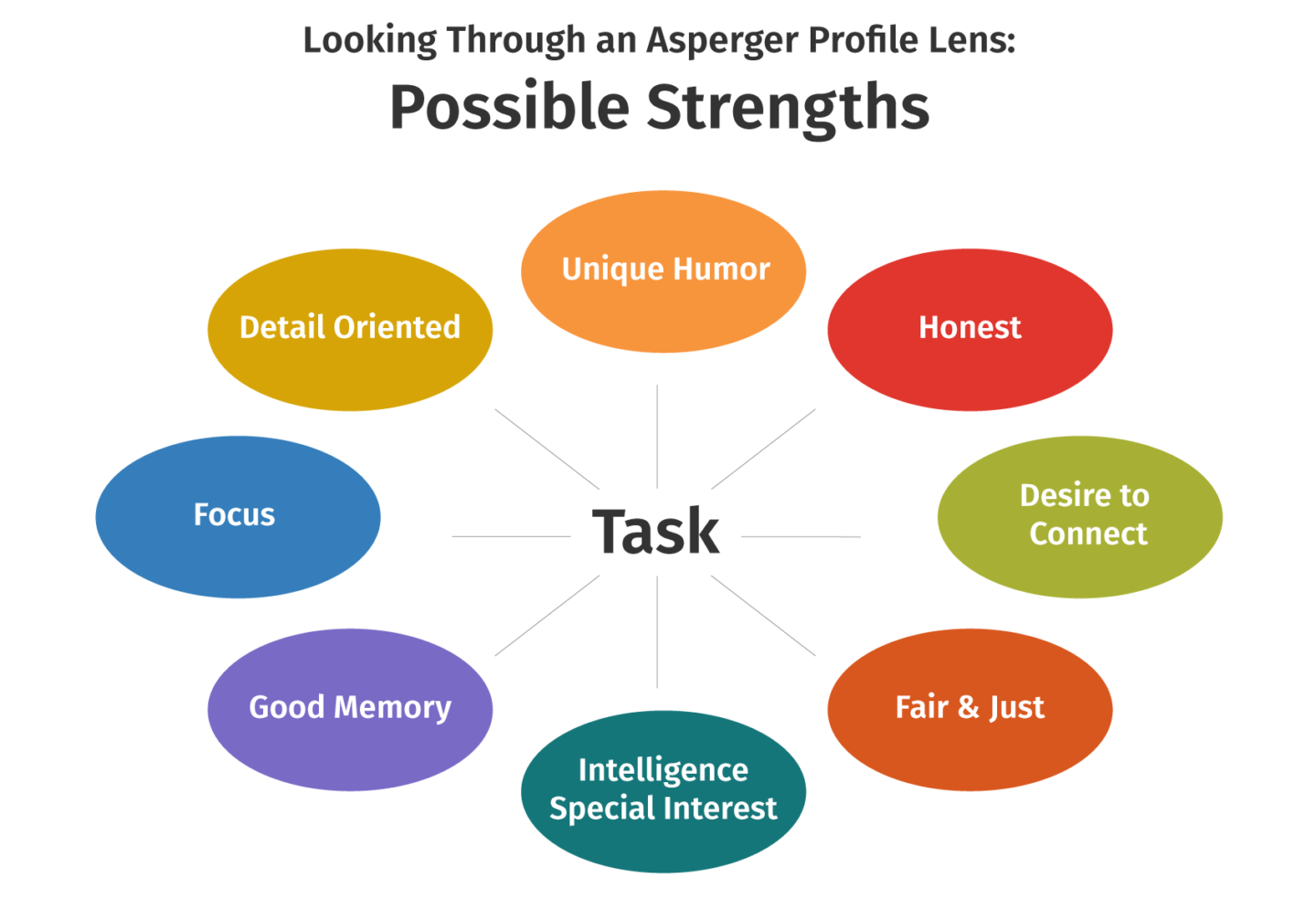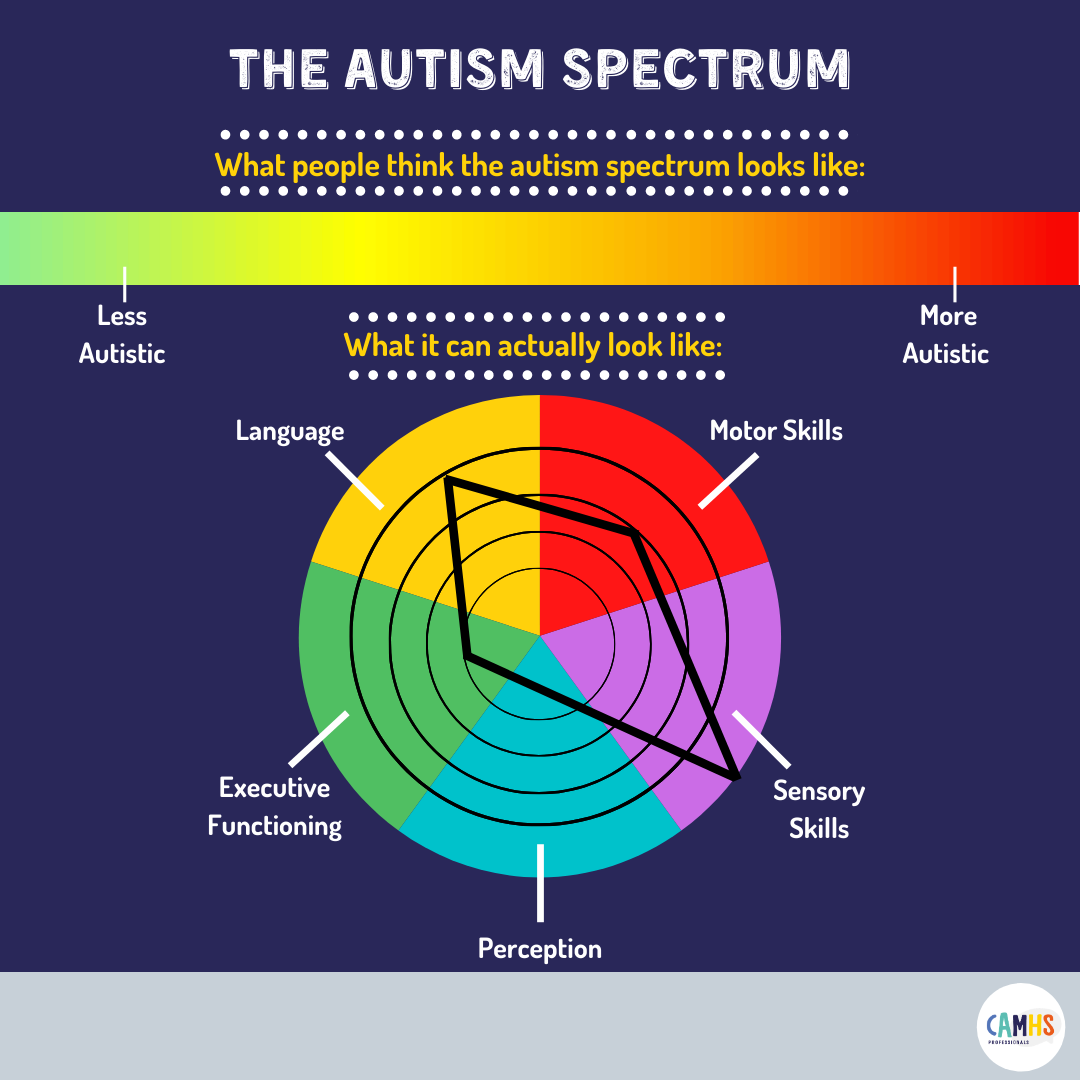Some quotes about what autism is:
- The root difference is that the autistic person develops a type of brain that admits natural unfiltered stimuli and does not filter it (as much) using cultural meaning. The person does not become desensitized, and continues to see and hear and touch the world in a more direct way than NT [neurotypical] adults do, because the symbolic filtering doesn’t protect the senses against the world.
- As a result of the root difference, the person is considered overly sensitive in typical NT environments, and learns to manage it by shutting down or other techniques. The autistic’s stims [self-stimulates by rocking, spinning, etc.] and “problem behaviors” could mainly be side effects of being overwhelmed.
- The person doesn’t develop language or develops a lower dependency on language, because their inputs are direct, language isn’t needed as a tool of perception, and the feedback between language, gesture, and all other cultural symbols to their perception is not developed. This helps explain the basic communication problems.
- With a lower use of language, the person develops cognitive independence, and does not follow the herd. This results in being “in their own world” or nonconforming. If the conformance is very low, the person will be less able to learn from others, and will acquire a smaller generalized base of experience and knowledge, making it less possible for them to live independently. However, the cognitive independence can lead them into special interests which they can learn a lot about.
- The long term effects of being outnumbered by NTs include (a) the person has little or no opportunity to be with others on their own terms, and thus fails to mature in interpersonal skills or depth; and (b) the person is judged and coerced constantly by NTs, which is perceived as bashing; thus self-esteem falters, leading to chronic stress, anxiety, and depression.
Ford, Ian. A Field Guide to Earthlings: An autistic/Asperger view of neurotypical behavior (pp. 193-195). Ian Ford Software Corporation. Kindle Edition.
“I believe that almost all of the things that are ‘wrong’ with AS [Asperger's syndrome] people are just a result of a poor culture-to-person fit, and of the snowballing fall-out from cognitive dissonance generated by the huge gulf between the fairy-tales NTs believe are The Truth and the actual observable data.”
Anonymous, quoted in Ford, Ian. A Field Guide to Earthlings: An autistic/Asperger view of neurotypical behavior (pp. 195-196). Ian Ford Software Corporation. Kindle Edition.
This might need some explaining: one way neurotypicals process so much of the environment is by forming almost instantly a representation of the reality around them in terms of what they have experienced before. If that experience is limited then the representation will likely be wrong, hence the "fairy-tale."
“The ‘emotional difficulties’ of AS people seem to boil down to 4 things, and none of them are about us being inherently defective.
- we feel things - sensory and emotional things - more strongly than NTs;
- we’re more sensitive to other people’s emotions than NTs, and thus ‘catch’ their emotions faster and stronger;
- we cycle through our emotions faster than NTs (NTs perseverate emotionally);
- we’re given really really really (can I stress that again? really) bad data about what we and everyone else are feeling, which throws off all subsequent calculations and makes it impossible for us to get the ‘right’ answer.”
Anonymous, quoted in Ford, Ian. A Field Guide to Earthlings: An autistic/Asperger view of neurotypical behavior (p. 197). Ian Ford Software Corporation. Kindle Edition.
Here is my working definition:
- The autistic see reality directly, unfiltered by our brains, which makes us better observers.
- "Seeing reality" means our cognitive processes must be in charge, which is difficult to do all the time, so
- we occasionally, or often, just aren't all that interested in more interaction.
- We don't process new situations easily, so familiar is far more comfortable than unknown.

So what does the autism spectrum look like? Something like a Bell curve.
- To the left, with very low numbers, are the folks who desperately need people around them all the time; they interpret everything in terms of past experience, have relatively poor situational awareness; they can speak for hours without expressing any ideas or facts.
- To the right, also with very low numbers, are the folks who see reality so starkly they can barely function in it; they miss social cues and think very independently; they only express ideas and facts.
- In the center is where most of us are found; we have some autistic traits, but no so much we can't function, some more than most. On the right slope of the curve are the scientists, mathematicians, engineers, computer scientists, the groups we call "nerds," and some professionals who deal with groups. To the left are the party animals, the sports fans, the socialites, those who are in careers that bring them into contact with individuals. To the extreme left are the politicians, who need you to like them but who can never say anything substantive.
But in reality is more than a one-dimensional axis:
